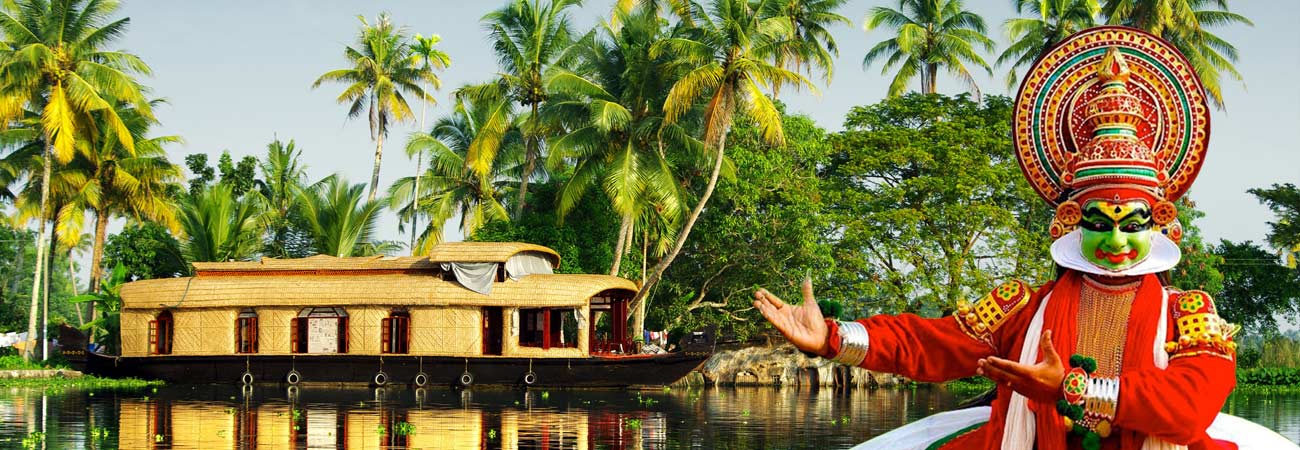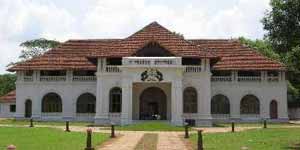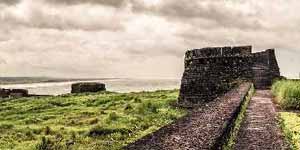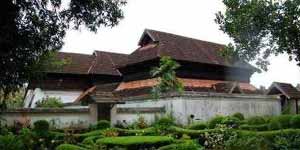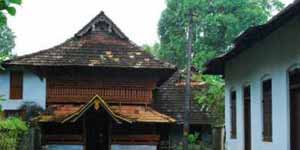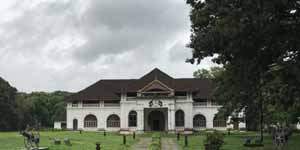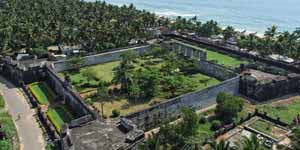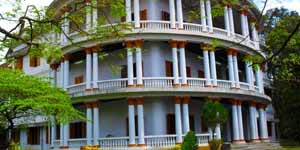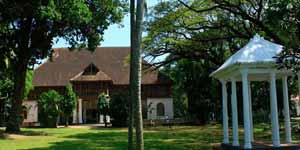
Anchuthengu Fort
Anjengo Fort is forever remembered in the pantheons of history as the location of the first trade settlement of the East India Company in Kerala. Legend has it that the English were given this site by the Queen of Attingal for trade purposes. Anjengo or Anjuthenguwas a small stretch of land with five coconut trees at the time and the fort was named after the same. The old English Fort that once stood here would be constantly attacked by foreign powers for centuries.
Today, this place provides one with a majestic architectural marvel situated in a picturesque setting. Located near the popular tourist haunt of Varkala, you have a secluded beach on one side and a backwater stretch on the other. The coconut groves that dot the shore add to the destination’s charm and make it among the finest picnic spots in the area. One can simply sit and watch fishermen diligently go about their work, following traditions and customs that have never changed regardless of whose flag was raised at the summit of the Fort.
Overview of Anjengo Fort
At Anjengo, tourists can find the remnants of the ancient English Fort which was targeted several times by the foreign powers, fighting each other to get a firm foothold in Kerala. As you enter inside the fort, you will also found a cemetery that has remains of the fort inhabitants and it's one of the oldest among the cemeteries dates to 1704. The fort is now preserved by the National Heritage Monuments. While visiting here, you may also explore Muthalapuzhi Lake located at the close proximity to the fort and the enchanting backwater stretch lined with coconut trees. Moreover, the fort is the first signaling station for ships coming from England.
Backwaters and Beach at Anjengo
The backwater stretches here at Anjengo and the path lined by coconut trees interlacing the water channels are indeed an enchanting view to lo and behold. Another attraction of this place is the serene beach which is pristine and perfect for picnicking. However, Anjengo is a place of historic importance and a wonderful natural setting which is admired by nature lovers.
Architecture of the fort
Compared to other forts in Kerala, Anjengo fort was different in architect compared to existing fort across the country. It appears more like a closed fortress with high-pitched walls. The fort possesses some security check-points, as well as entries from east and west. Anjengo fort is situated at about 36 km to the north of Thiruvananthpuram, near Varkala beach, on the coast. It is a beautiful destination for adventure lovers. Registered as a national heritage, the fort once served as a landmark for British ships. It is said that there is a cemetery inside the fort, the oldest of which dates from 1704. The fort is distinguished by its square shape, comprising four bastions, each equipped with eight cannons. The walls between the bastions were endowed with seven or eight canons. In addition, there is a battery of 20 canons facing the sea. It is said that the fort could once contain a garrison of 400 Europeans, with 70 to 80 topasses. Few meters from the site is a lighthouse open to tourists. The building offers a magnificent view of the great estuary and the avenue of coconut trees of Anjengo. Through a boat ride, visitors can visit the Shiva Temple situated on the Golden Island. The most important feature of Anjengo is its beautiful beach. Most of the visitors of Anjengo Fort love to picnic there and enjoy the charming and historic places.
Best Time to Visit:
Tourists can visit between December and March as the climate remains pleasant and one will enjoy exploring the surroundings during this time.
Monuments in Kerala
Monuments in Kerala is one of the most visited tourist destinations in India. The beautiful state is not only replete with natural beauty but it is the land of abundant historical attractions. During your tour to Kerala, you can explore some of the most famous historical monuments of Kerala that let you know the glorious past history of the state. The coastal state is home to diverse landmarks, architecture, and culture. The royal dynasties of Kerala, colonial Portuguese, Jews, Dutch and British have inhabited the region and have inspired many architectural marvels. Magnificent forts, palaces, architectural monuments represent the ruling dynasties and cultures that existed here. The combined history of the state is a treasure. Every monument is an insight into the charming history of God’s Own Country.

